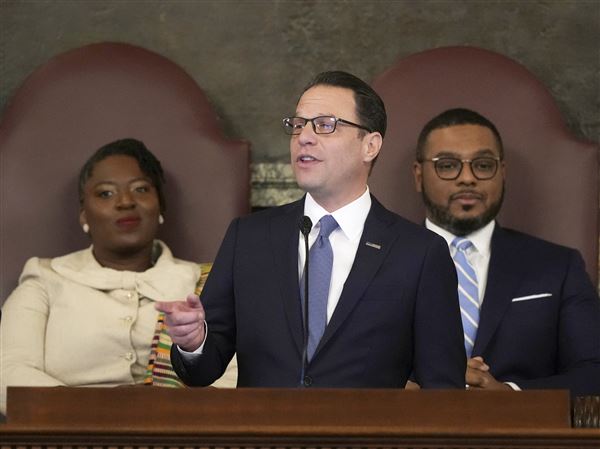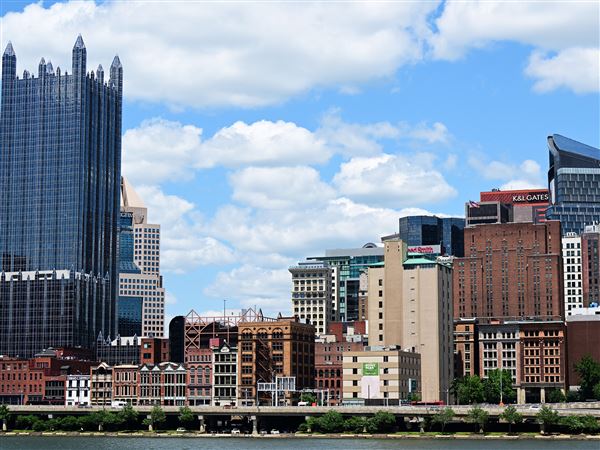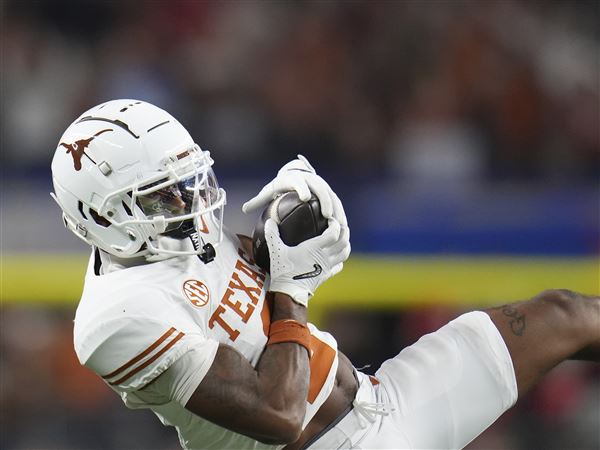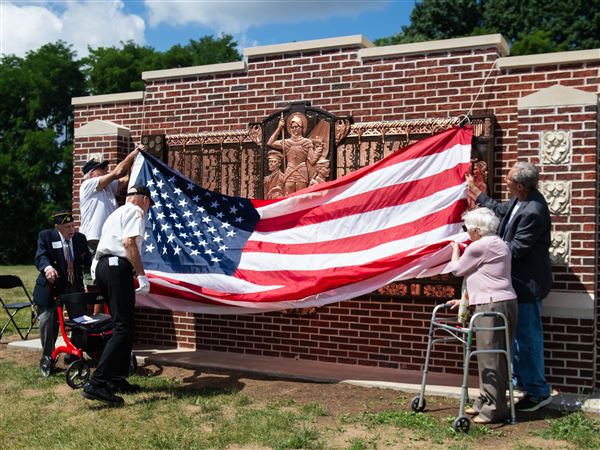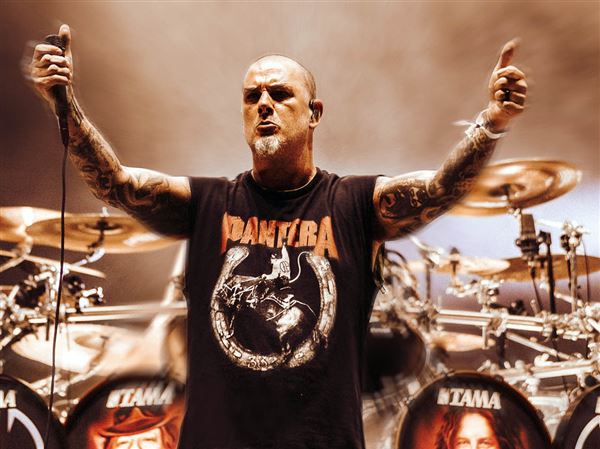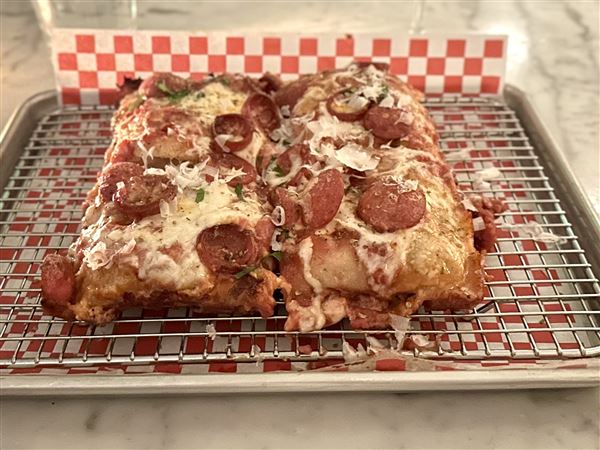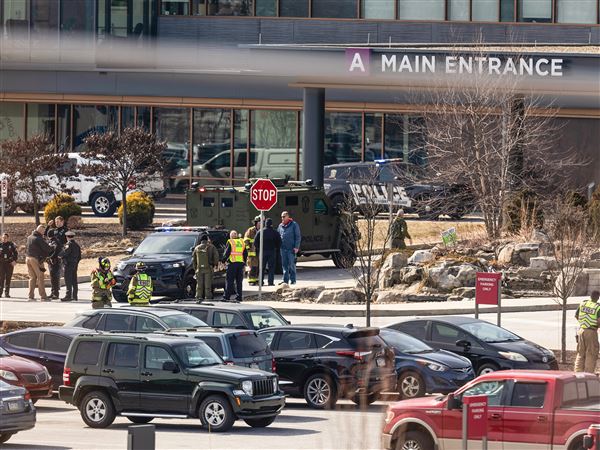This is the third of eight chapters. Click here for the full story and an interactive display with video highlights of Mario Lemieux’s career and more photos.
Mario Lemieux spent his first three years in the NHL in the shadow of a legend.
Wayne Gretzky's numbers said it all after the 1987 season. Eight straight Hart Memorial trophies as the NHL's most valuable player. Seven straight Art Ross trophies as the league's leading point scorer. Winner of three of the last four Stanley Cups
Lemieux had emerged as the second-most popular player in the game and a legitimate Hart candidate. His ascension was on schedule by any reasonable measure. Still, Lemieux had not forgotten why he chose to wear the ‘66’ as a nod to Gretzky’s ‘99’.
“I had the mindset of becoming the best in the world,” Lemieux says. “Looking at Gretzky, the way he was racking up points, I had a long way to go.”
The chase was officially on, but playing in Pittsburgh had been frustrating. There weren’t many meaningful games, and when Lemieux did have a big stage, like when Gretzky’s Edmonton Oilers came to town, he didn’t have the talent around him that could help him shine.
So when Lemieux arrived at training camp for the 1987 Canada Cup late that summer, he relished the chance that was in front of him. He would be skating against the best players in the world, surrounded by the firepower of Team Canada, including the “Great One.” All over the globe, the sport’s rabid fans would be watching the dynamic between Gretzky and Lemieux. Would one defer to the other? Would their egos get in the way? Canada coach Mike Keenan couldn’t resist pairing them up to find out.
“Mario was always a study,” says Paul Coffey, another Canada Cup teammate. “Mario watched every move Gretz made. There were no insecurities, and Wayne wanted to teach him.”
Four years after passing on a chance to play for his country in World Juniors, Lemieux dazzled on his home soil, scoring seven goals in the first six games and helping the Canadians advance to the three-game championship series against the Soviet Union, which would bring its incomparable allure to the event. Back in Pittsburgh, Penguins diehards gathered around their televisions to see if Lemieux could show the world what they already knew: Mario was unstoppable.
The Russians took Game 1, 6-5, holding Lemieux without a goal. But in Game 2, he began to live up to his name. He scored the last three Canada goals in a 6-5 victory — all on assists from Gretzky — including the winner in the second overtime. It would go down as one of the greatest hockey games played.
“When they played on a line together, it was magic,” says Rick Tocchet, a Canada Cup teammate. “There’s one puck there, and two superstars. If they both want the puck, it might not work.”
Game 3 followed the same script. The teams were tied 5-5 with less than 2 minutes left. After a face-off, Lemieux poked the puck ahead and then flipped it up to Gretzky on his left. Lemieux trailed, and there was no doubt that Gretzky was going to give it back to the kid at just the right time. Lemieux was free and received the pass in the slot, skated in with a clear shot and beat the Soviet goaltender high glove side. Lemieux grabbed Gretzky, and their teammates crowded them. All over Canada, pandemonium.
You don’t give Lemieux that kind of room! the play-by-play man bellowed.
For the tournament, Lemieux scored 11 goals — the closest competitor had seven — and Gretzky took MVP honors with 21 points. Lemieux then headed for Penguins training camp, where he arrived a different person.
“That was the turnaround in my career,” Lemieux says. “It was six weeks of playing with the best in the world, learning what it took to be a champion. I looked up to Gretzky. He was the hardest worker in practice, even though he was the most talented. His work ethic was incredible.”
Lemieux’s teammates immediately took notice. In past years, he had shown up to camp and dominated simply because he was Mario Lemieux. Phil Bourque recalled one time asking him where he’d been all summer, because Bourque hadn’t seen him. “This is the first day I put my skates on,” Lemieux had said.
“It was night and day to me,” Bourque says. “He was a man. It was a body language thing. When he looked at you, and you looked at him, you knew … he’s going to another level right now, and you better get on board.”
Coffey had seen enough of Lemieux in the Canada Cup to know that Pittsburgh was now a destination. Coffey’s contract negotiations with Gretzky’s Oilers were at a standstill, so when the Penguins became an option, “I couldn’t get there fast enough,” says Coffey, a Hall of Fame defenseman.
As one of the few who played with Gretzky and Lemieux during their primes, Coffey would field the question for the rest of his days: Who was better?
“The answer always is you cannot accumulate the points Wayne did and not be the greatest player who ever played,” Coffey says. “That being said, the most talented player that ever played the game was Mario. You can’t be 6-foot-4, have a reach from here to the Allegheny River, with hands that soft …
“I have a simple way to describe it. When I played with Wayne, and I threw him a long pass, I’d hustle after him, and he would deke and draw four or five guys and throw it to you or someone else. When I played with Mario, I’d hit him with that long pass, then I’d bust my butt up there to get a front-row seat, to watch him do his thing and go score. It was incredible.”
Lemieux’s game was elegant, effortless. From the time he started playing as a boy, he had a heightened awareness on the ice, seeing things before they happened. As a pro, he had begun to harness it, and it would play out in odd ways. Like, during a game, he always knew if his friends were in their seats at Civic Arena, and one time he smacked the glass with his stick to make a beer spill on close friend Tom Grealish. Then there are the ways that mattered — like banking a puck off Tocchet’s stick for a goal that would go in the books as a Lemieux assist.
“It’s always been with me as far as far as I can remember,” Lemieux says. “I think that’s what made me better than some other guys. Just being one step ahead all the time … not only having the talent but putting it all together with your mind.”
Nobody could control the flow of a game like Lemieux, and his teammates felt lucky just to be a part of it.
“When the coach puts the lineup on the board and you see your name up there beside Lemieux, you can’t imagine … just talking about it right now gives me goose bumps,” says Bob Errey, a longtime Lemieux winger. “All of a sudden, your heart rate goes up.”
He had the same effect on opponents.
“You couldn’t handicap him,” legendary coach Scotty Bowman says.
“An exercise in futility,” says longtime Rangers goaltender John Vanbiesbrouck, who gave up more Lemieux goals (30) than anyone. “You just keep trying stuff and seeing if it works.”
Lemieux would follow the Canada Cup with his breakout season in 1987-88, unseating Gretzky for the first time as the Hart and Ross winner with 168 points (70 goals). The next year, he would tally 199 points to bring home another Ross.
Still, for many Pittsburghers, he remained an afterthought in a Steelers- and Pirates-dominated sports scene. He was the best athlete in the city at a time when people needed something, anything, to believe in, but some simply wouldn’t give hockey a chance. To break through in this town, after the four Super Bowls and two World Series titles in the 1970s, you had to win the big one. The same standard applied in the hockey world: A player couldn’t be considered one of the best until he won a Stanley Cup.
What nobody outside the Penguins knew, because he was so quiet, was that Lemieux had his own personal mountain to climb each day before he could even take the ice.
Since his major junior days, Lemieux had been playing with back pain, and it had worsened with wear. It was Dr. Charles Burke’s job as the Penguins team physician to monitor the situation, but there was only so much he could do. Lemieux had congenital spinal stenosis — he was born with a narrow spinal canal — which had been intensified by spondylolysis, a defect of the vertebrae.
At his peak, as he pursued Gretzky’s record 51-game point streak at the end of the 1989-90 season, Lemieux was burdened with pain that most mortals couldn’t fathom. He could not bend over to tie his own skates, so the Penguins built him a stool where he could rest them while a team employee laced him up. His teammates knew what he was going through to be out there with them; heck, they could smell the stench of his back ointment on the bench.
“What people don’t understand,” Dr. Burke says, “is that the majority of nights he played, he played at 25 percent, 50 percent. He played so little of his career at full or 100 percent. I remember one game against the New York Rangers during the streak, we picked him up and stood him up and literally gave him a push to get him going.”
The streak stopped at 46, and Lemieux knew he couldn’t continue playing in this shape. That offseason, he had back surgery.
The Penguins had made some key moves to compete for a Cup, and they had hired the experienced Bob Johnson as coach. Lemieux sensed that his time had finally arrived, but he had to work on that back first. Only, after the surgery, Lemieux was in more intense pain. An MRI revealed a post-surgery infection. Lemieux would spend the first half of the 1990-91 season bedridden in his Mt. Lebanon home. The longer he wasn’t around the Civic Arena, the more media and fans panicked.
“People thought his career was over,” Dr. Burke says. “We didn’t want him to be crippled as an adult.”
Lemieux returned to the ice Jan. 26, 1991. The Penguins had managed to go 26-21-3 without him, and with their leader, they pushed on to the division title. In the playoffs, Lemieux’s game rose with the stakes, just like in the Canada Cup. He was in so much pain that he had to sit out Game 3 of the Stanley Cup final against the Minnesota North Stars, but he still scored 44 points in the postseason, second in NHL history.
Along the way, Lemieux found his voice as a captain, too. “We’re not going back for Game 7,” he told the team before Game 6 in Minnesota.
“He never lets anybody down,” Errey says.
The Penguins jumped on the North Stars from the start and won 8-0, clinching the franchise’s first Stanley Cup. Lemieux led all scorers with 12 points in five games and was awarded the Conn Smythe Trophy as playoff MVP. As the team plane flew toward Pittsburgh, thousands of people had gathered at the airport in the middle of the night to welcome them home. It had taken seven years, but Lemieux finally had everyone’s attention.
He was now walking in rarefied air. So it was no coincidence that he would cross paths with Michael Jordan that summer. His Airness, who had just won his first NBA Finals, and Lemieux met in Lake Tahoe at a celebrity golf tournament and clicked through their shared passions of golf, French wine and cigars. It didn’t hurt that Lemieux was also one of the few people on the planet who happened to be going through the exact thing Jordan was — mostly, intense relief.
“It was very similar,” Jordan says. “It was a dogfight. We were scoring champions who couldn’t win a championship. We had great conversations about it. It was that type of relationship, that type of brotherhood.”
Michael Jordan had few peers, but he saw Lemieux as one of them.
“Even though Mario was a bigger guy on skates,” Jordan says, “it just seemed like he was moving so gracefully, like he had a rhythm about everything he did. I had a strong aggression about the way I played. It looked like his game came easier than mine.”
The gradual polishing of Lemieux was becoming apparent off the ice, too. Howard Baldwin, the Penguins’ new owner, was part of the Los Angeles social scene as a Hollywood producer and sensed his newly acquired talent in Pittsburgh — had he wanted to live life in the spotlight — would have fit right in.
“It’s just the aura he gives off,” Baldwin says. “We’ve worked with pretty much anybody and everybody out there, and there are a few that have the aura of a superstar. When they walk into a room, you know they’re there. It’s almost like a spiritual thing. It’s an intangible gift that not many people have, and he has it.”
Baldwin was in awe of Lemieux. After the second Stanley Cup in 1992, when Lemieux and agent Tom Reich approached Baldwin about a major contract extension that would make him the highest-paid player in the NHL and keep him in Pittsburgh until the end of the decade, Baldwin didn’t balk, agreeing to a seven-year deal worth $42 million plus bonuses.
And to show how just how far Lemieux had come, Reich had included some specialized language in the contract: Lemieux would always be paid at least $1 million more per season than Wayne Gretzky.
J. Brady McCollough: bmccollough@post-gazette.com and Twitter @BradyMcCollough.
First Published: November 29, 2014, 5:00 a.m.
